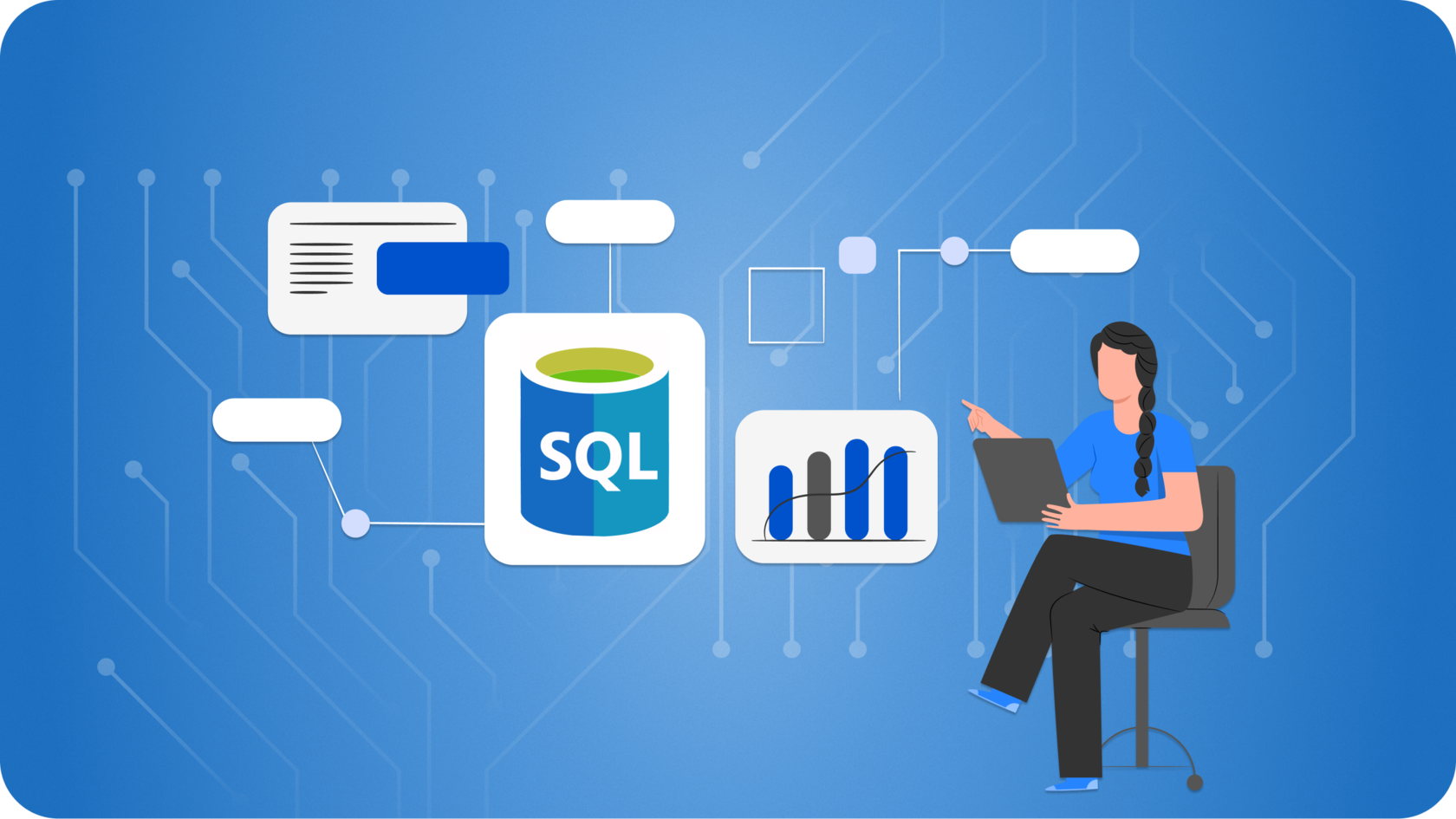In today’s data-driven world, businesses rely heavily on up-to-the-minute insights to make informed decisions. Real-time reporting bridges the gap between static data and actionable intelligence, enabling professionals to respond to trends and anomalies as they occur.
SQL plays a pivotal role in powering real-time dashboards, providing the backbone for live data queries and seamless integration with business intelligence (BI) tools. This guide explores the strategies, techniques, and best practices needed to create dynamic, real-time SQL-driven dashboards.
Background
The demand for real-time analytics stems from the evolving need for speed in decision-making processes. Traditional batch processing systems, while reliable, often fail to meet the demands of modern business environments where timeliness can determine success.
Real-time reporting leverages SQL’s ability to query and manipulate live data streams, integrating with BI tools like Tableau, Power BI, and Looker. These dashboards empower organizations to visualize and act upon data as events unfold, from monitoring sales performance to tracking server uptime.
Key Concepts
Here are the foundational elements for building real-time SQL-powered dashboards:
- Real-Time Data Sources: Databases or systems capable of updating continuously, such as transactional databases or streaming platforms.
- Live Connections: Direct links between the BI tool and the data source to ensure fresh updates.
- Query Optimization: Techniques to enhance SQL query performance, critical for live reporting.
- Data Modeling: Structuring data to support fast and efficient real-time queries.
- Caching and Aggregation: Methods to reduce load on databases while maintaining responsiveness.
Detailed Explanation
Why Real-Time Reporting Matters
Real-time reporting delivers insights as they happen, offering distinct advantages:
- Proactive Decision-Making: Quickly respond to issues or opportunities.
- Operational Efficiency: Monitor and optimize ongoing processes.
- Improved Customer Experience: Real-time data enables personalized, timely interactions.
Challenges in Real-Time Reporting
- Performance: Handling large volumes of data can slow down queries.
- Data Freshness: Ensuring data is consistently up-to-date across systems.
- Scalability: Maintaining performance as datasets and users grow.
SQL’s Role in Real-Time Dashboards
SQL’s versatility and ability to integrate with various data sources make it ideal for real-time reporting. Key capabilities include:
- Writing queries for live data extraction.
- Combining transactional and historical data for comprehensive views.
- Supporting data transformations for visualization-ready formats.
Step-by-Step Guide
Step 1: Identify the Data Sources
Choose databases or platforms that support real-time data updates. Examples include:
- Transactional Databases: MySQL, PostgreSQL, or SQL Server.
- Streaming Platforms: Apache Kafka or Google BigQuery.
Step 2: Establish Live Connections
Set up live or direct connections between your BI tool and the data source.
Example with Power BI:
- Use the DirectQuery feature for real-time data refresh.
- Ensure the data source supports high-frequency updates to maintain freshness.
Step 3: Optimize SQL Queries for Speed
Slow queries can render dashboards ineffective. Employ these optimization strategies:
- Indexing: Create indexes on frequently queried columns.
- Avoiding Nested Queries: Replace complex subqueries with Common Table Expressions (CTEs).
- Using Proper Joins: Prefer INNER JOINs for better performance.
- Limiting Results: Use
LIMITorTOPto restrict unnecessary rows.
Step 4: Model Data for Efficiency
Design the schema to balance performance and usability. Techniques include:
- Denormalizing data for faster lookups.
- Pre-aggregating key metrics to reduce runtime calculations.
Step 5: Integrate Real-Time SQL with BI Tools
Each BI tool has unique features to support real-time reporting:
- Tableau: Use live connections or custom SQL queries to fetch data.
- Power BI: Leverage DirectQuery or streaming datasets.
- Looker: Create persistent derived tables (PDTs) for optimized real-time queries.
Step 6: Test for Responsiveness
Simulate dashboard usage with real-world scenarios to identify bottlenecks and improve performance.
Tips
- Minimize Query Complexity: Simplify queries to reduce processing time.
- Use Materialized Views: Cache frequently queried data for faster retrieval.
- Monitor Database Performance: Use tools like pg_stat_statements or SQL Server Profiler.
- Schedule Data Refreshes: For near-real-time needs, balance frequency with system load.
- Secure Data Access: Ensure that live connections use encrypted protocols and role-based access controls.
Case Studies or Examples
Example 1: Real-Time Sales Tracking
A retail company uses SQL to monitor daily sales performance:
- Data Source: A PostgreSQL database with transaction logs.
- Dashboard Tool: Tableau with a live connection.
- Query:
sqlCopy codeSELECT store_id,
product_id,
SUM(sales_amount) AS total_sales,
CURRENT_TIMESTAMP AS last_updated
FROM sales_transactions
GROUP BY store_id, product_id;
The dashboard visualizes total sales by store and product, updating in real-time to inform inventory and staffing decisions.
Example 2: Server Uptime Monitoring
An IT department monitors server uptime using SQL queries on a log database:
- Data Source: MySQL with real-time logging from servers.
- Dashboard Tool: Power BI with DirectQuery.
- Query:
sqlCopy codeSELECT server_id,
MAX(timestamp) AS last_ping,
CASE
WHEN TIMESTAMPDIFF(MINUTE, MAX(timestamp), NOW()) > 5 THEN 'Offline'
ELSE 'Online'
END AS status
FROM server_logs
GROUP BY server_id;
FAQ
Q1: What are the best databases for real-time reporting?
A: Databases like MySQL, PostgreSQL, and Snowflake are excellent for transactional data. For streaming data, consider platforms like Apache Kafka or Google BigQuery.
Q2: How often should I refresh data in real-time dashboards?
A: The frequency depends on your use case. Critical systems may require refreshes every few seconds, while others can suffice with hourly updates.
Q3: Can real-time reporting handle large datasets?
A: Yes, with proper query optimization, indexing, and caching, real-time reporting can efficiently handle substantial datasets.
Q4: How do I avoid overloading my database with live queries?
A: Use techniques like query throttling, caching, and pre-aggregating data to reduce database load.
Conclusion
Real-time reporting powered by SQL transforms static data into actionable intelligence, enabling businesses to stay agile and responsive. By following best practices like query optimization, data modeling, and live BI tool integration, you can build dynamic dashboards that provide up-to-date insights.
Whether you’re tracking sales, monitoring systems, or analyzing customer behavior, real-time reporting ensures your organization operates with the most current data at its fingertips.

Leave a Reply